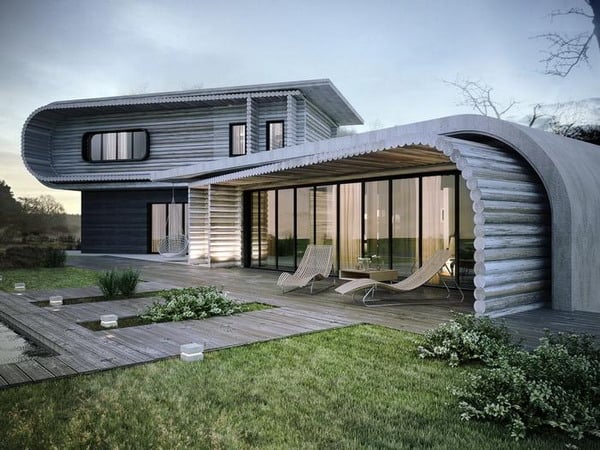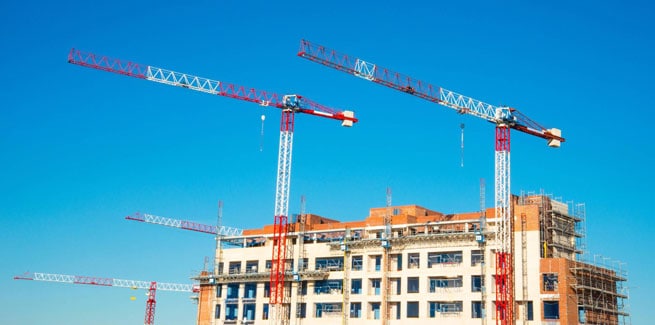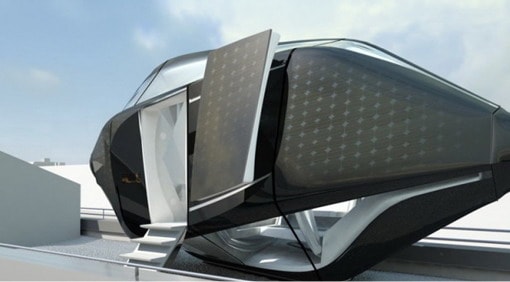When choosing a project for building a house, each owner expects to fulfill two conditions: the efficiency of assembly and the comfort of housing. That is why manufacturers offer high-quality and practical modern materials. And the technology is also using the latest. For example, smart home technology that meets all the requirements and requirements of a modern user.
New Technologies for Private House Construction
New materials and their features
Modern materials are of invaluable quality – they are able to realize any forms and formats of buildings, without requiring large investments from the developer
It is worth paying attention to the fact that the latest technologies in construction and high-tech materials are different concepts, although they lie on the same plane. In particular, such piece products as:
- foam concrete blocks;
- gas blocks;
- rounded log;
- OSB plates;
- Sandwich panels;
- SIP panels;
- other …
These are production innovations that have recently appeared on the market of building materials, but they do not determine new technological methods, but have features in terms of installation. For instance:
- Block products (foam, aerated concrete) has a larger format than piece bricks, has high energy intensity, low weight, variable density. Due to these indicators, the construction period is reduced, workability is increased and all the high indicators of strength, comfort and practicality of the private house are preserved. Another plus is the price of materials is lower than for brick, and due to the low weight of the structure, the arrangement of a lightweight foundation is shown.
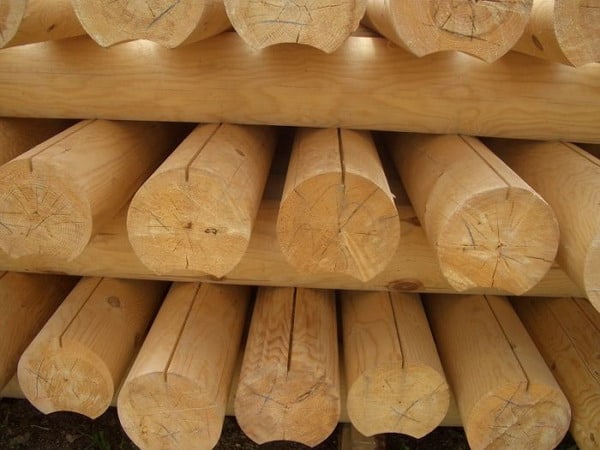
- A rounded log is a natural material that has all the characteristics of a natural tree and has high heat capacity, but the price of the material is lower than that of glued beams, although practical qualities remain at a high level. The developer receives a convenient piece of material of a stable form, saving on procurement, and thereby reduces the total cost of the project.
- Panels. It is also a single-piece product, ideal for a private developer. The convenience of the material in its complete readiness for installation, that is, the panels are already equipped with a heat-insulating layer, a windproof membrane and moisture protection. You just need to mount the box of walls, floors and roof – the house is ready. In some cases, panel sections have external and internal finishes. The price of materials is much lower than any other piece products, the light weight of the elements requires a lightweight foundation, assembly is carried out without “wet processes”, lifting equipment is not always required for installation, which allows you to build a house with your own hands.
Moreover, all of these materials are of invaluable quality – they are able to realize any forms and formats of buildings, without requiring large investments from the builder.
New technologies and their features
The use of materials of a new order does not abolish the use of house building on new technologies. The combination of two indicators provides not only the efficiency of the construction of buildings, but also a significant reduction in the cost of housing construction.
TISE
Extremely popular technology, also defined as “movable formwork.” The process was developed by domestic scientists and when using it does not require not only the use of special equipment, but also allows you to get by with just one pair of hands.
TISE principle
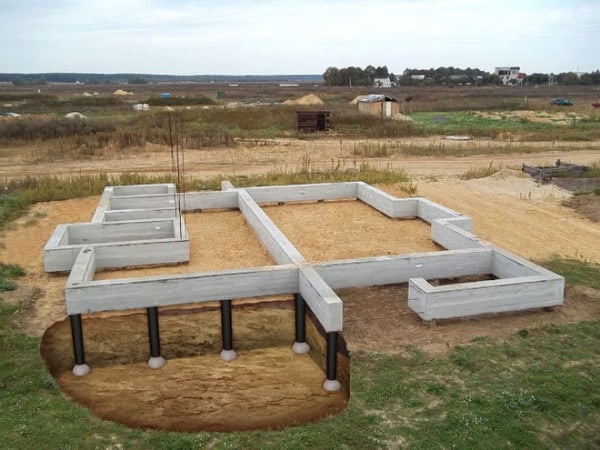
The method is characterized by the installation of pile elements or the arrangement of a columnar-type foundation, supplemented by a grillage. A required tool is a drill designed for TISE technology. Wall panels for this lightweight foundation are assembled from a block piece product formed directly at the construction site: the mobile formwork acts as a form and moves along the wall panels as soon as the made module freezes.
Advantages of technology:
- The complete absence of cold bridges;
- You do not need a team of professionals, you can do it yourself and a couple of assistants to move the formwork and earthwork;
- Variability in the composition of blocks, which reduces construction costs.
Advice! Most often, two building materials are used in TISE technology: concrete and brick. Concrete blocks are characterized by high heat capacity, brick for cladding will give the structure strength, shape stability and additional rigidity.
Frame construction
This is one of the easiest and most convenient ways to build a private home. A variety of options for arranging the frame, an easy foundation, the ability to build houses up to 2 floors, a huge number of projects and the practicality of the house are the main advantages of the technology.
Features
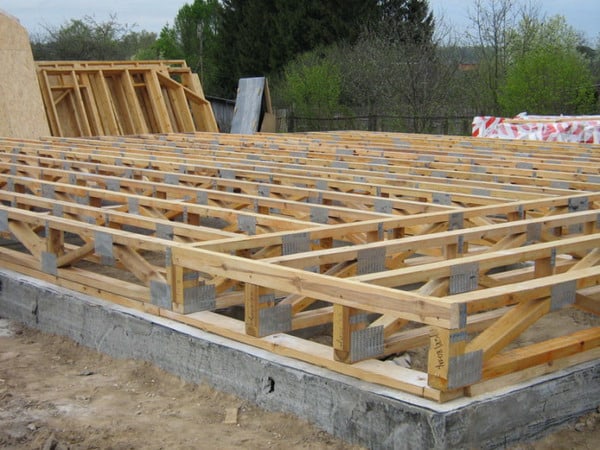
The construction of the frame begins immediately after the installation of the foundation. The whole design consists of block elements arranged horizontally, vertically or diagonally, articulated with each other by various options. Used lumber, metal – it all depends on the financing and preferences of the builder.
It is only important to remember that the metal frame, although it is more durable, but requires the presence of metal drilling tools, welding – these nuances can complicate the process of erecting the frame. Good quality lumber is not inferior to metal in durability, while simplifying the assembly process. Most often, a good quality beam is used, because of which both the shown stiffness of the frame and its geometric stability are preserved.
The modern construction of frame houses allows several options for filling the walls:
- OSB plates act as wall panels and are filled with any improvised heat-insulating material, for example, mineral wool, foam concrete, expanded clay backfill, polyurethane foam.
- Prefabricated shield SIP panels , already understaffed with a heater, wind- and water-proof film.
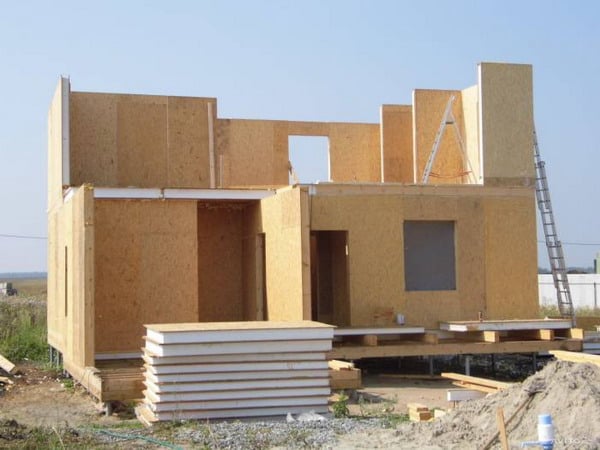
Advice! Practicing modern materials and technologies for construction, it is necessary to consider the convenient application of all elements. In particular, if you build a house with SIP panels, in order to do it on your own you will either have to choose lightweight elements or hire elevators, since wall panel elements often have heavy weight. But it all depends on the preferences of the owner of the house.
Technology benefits
- The ease of construction does not require the construction of heavy and powerful foundations, which means that the construction of a house is available on any ground without additional excavation work;
- Minimum construction costs and the ability to quickly redevelop, complete the building;
- The variability of the external, internal cladding – panels and sheets easily accept finishing materials, so you can change the look of the house at least every season.
3D panels
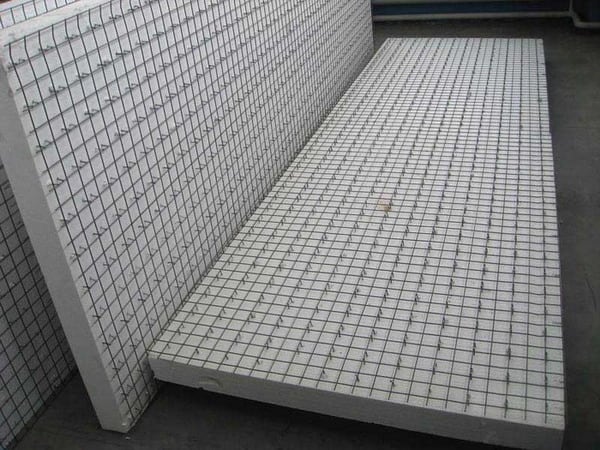
These are, perhaps, the latest technologies in construction, which are still little known and accessible to developers. Despite the cheapness, accessibility is limited by ignorance and nothing more, because construction using 3D panels is nothing more than a modified version of the frame construction of houses.
The panels are manufactured in industrial conditions, they are not a kind of prefabricated shield element, but a monolith of a plate made of polystyrene foam, additionally reinforced with reinforcing mesh structures on both sides. Such systems are interconnected by metal bars of reinforcement, passing through the entire structure through it, which preserves not only the stability of the shape of the panels, but also explains the high strength, resistance to any natural influences. At the same time, the extremely light weight of the structure is preserved, and the assembly does not cause any difficulties.
Technology advantages
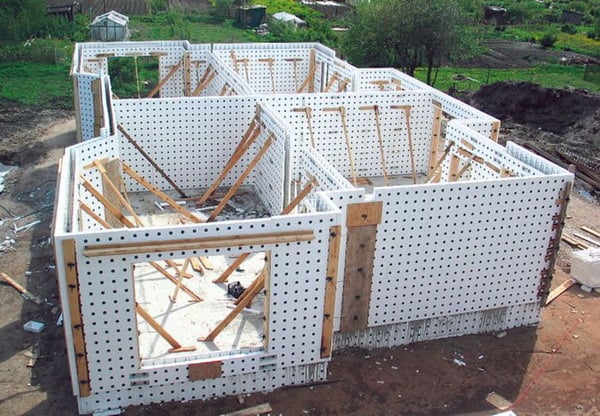
In the standard sense, a structure made of 3D panels does not have any “rigid frame”; instead, the developer receives a panel element connected by a rigid clip and thereby forming load-bearing wall panels. After installing these panels, the entire structure is poured with a concrete “shirt”, which only increases all the advantages of such a house:
- The polymers used to create the panels have high energy efficiency indicators, which means that heat loss in such a house will be minimal;
- Simplicity of assembly ensures the efficiency of development;
- Manufacturing under industrial conditions guarantees the quality of both an individual element and the entire building as a whole;
- There is no need to create a heavy foundation, 3D panels, even in concrete pouring, do not have a heavy mass.
Important! The material is much simpler than any block products in the sense that when hanging heavy cabinets you do not have to strengthen the wall with boards. At the same time, the price of 3D panels may well compete with foam and gas-block products.
Fixed formwork
Accessibility and ease of execution have made this technology one of the most popular and often used in individual housing construction.
The principle of technology and its advantages
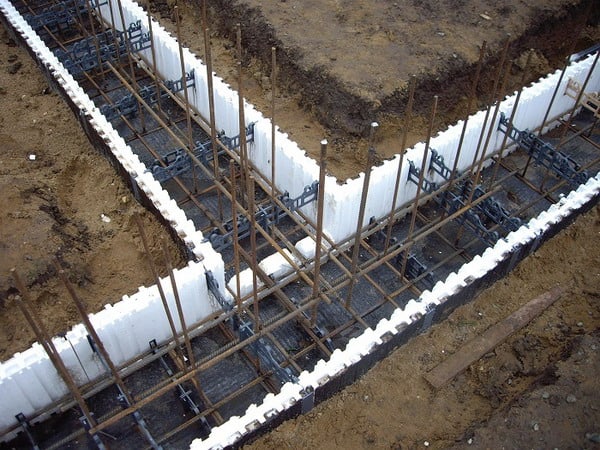
As in the case of TISE, the use of fixed formwork allows you to build a house alone. Another pluses are the following factors:
- The formwork is formed from block or panel structures, which during the construction of the house are located around the perimeter of the base and form a wall where reinforcement is mounted and concrete mortar is poured, which gives the structure additional rigidity;
- The variability of the formwork filler can save a lot on building a house;
- You can build structures up to 2 floors, while the foundation remains lightweight due to the low weight of the entire building.
Advice! If you choose not only new technologies for building private houses, but also the right filling materials, in this case, for wall formwork, you will not have to worry about additional heat-insulating materials.
Construction of SIP panels
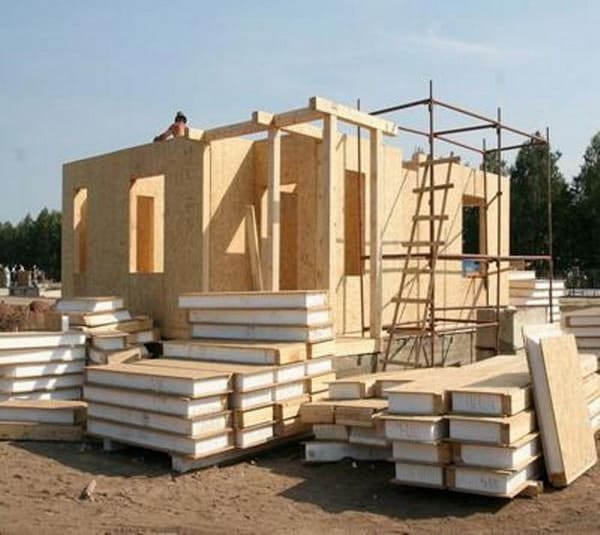
As for this technology, the most modern materials are used here, but the essence is reduced to a subspecies of frame construction. SIP-panels are a shield material from two chipboard plates, between which thermal insulation and waterproofing material is laid, often an additional wind membrane is also present. The main advantage of such panels is their readiness for on-site installation.
In addition, there are still pluses:
- Efficiency of assembly at home;
- The light weight of the panels, which makes it possible to use a lightweight foundation and to manage on-site during construction.
Advice! Despite the apparent lightness of the panels, this is a very durable material. The built house will be not only warm, practical, but also resistant. SIP panels easily withstand hurricane winds, snowfalls and other environmental influences. At the same time, the material is easily mounted, fastened and, most importantly, the production of panels is possible only in industrial conditions, which, with a good selection of the supplier, guarantees excellent quality of piece elements.
Velox (Velox)
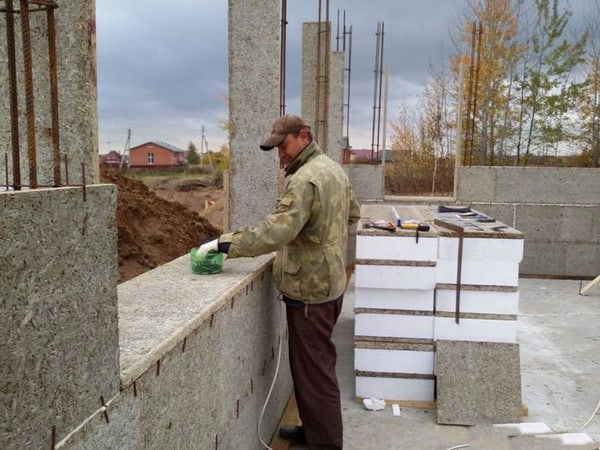
A relatively new technology used for the construction of private houses, the principle of which also consists in the use of fixed formwork. The difference from other methods is that the formwork is not made from polystyrene block elements, but from chip-cement or cement-bonded slabs. The outer plate has an additional seal and insulation made of polystyrene foam. Fixed formwork comes in different thicknesses and is connected with a cement solution with the addition of water glass, which gives moisture-repellent properties to the structure.
The advantages are the following factors:
- Light weight and thickness of wall panels;
- Lack of additional warming;
- Efficiency of construction work;
- The strength of the building.
Applying new technologies in the construction of private houses, one should not forget about other nuances: as a rule, all modern technologies are not designed for multi-story buildings, therefore an accurate and high-quality calculation of the load and filling of buildings is required. And, of course, not the last point – the materials. Manufacturers offer a huge range of products characterized by excellent quality indicators at a reduced cost.

